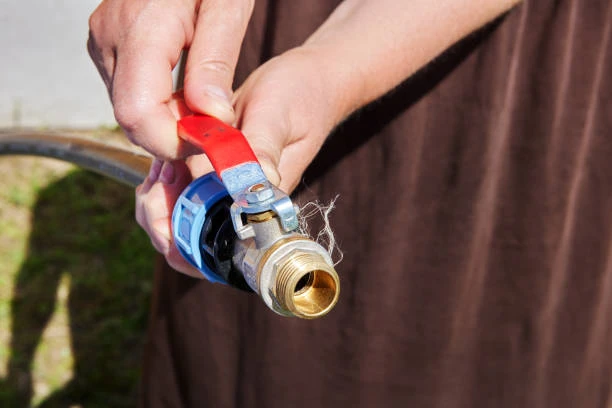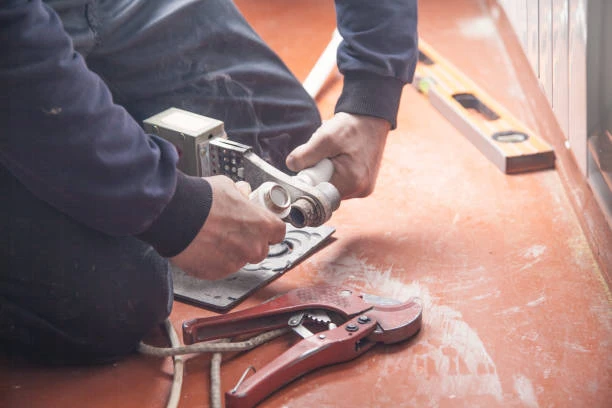Italy’s plastics pipe fittings market has witnessed considerable growth due to the expanding demand for durable, cost-effective, and efficient piping solutions across industries. This market report explores the key trends, challenges, and growth drivers shaping Italy’s plastics pipe fittings industry in 2024, providing an insightful overview of the sector’s expectations.
Overview of the Plastics Pipe Fitting Market in Italy
The Italian plastics pipe fitting market serves industries like construction and agriculture, focusing on sustainability and innovation. Plastics fittings are preferred for their flexibility, resilience, and cost-effectiveness compared to metal options. This aligns with Italy’s growing emphasis on infrastructure improvement.
Importance of Plastics Pipe Fitting in Italian Industries
Plastics pipe fitting play an essential role in ensuring efficient water management, wastewater treatment, and agricultural irrigation. In Italy, where environmental consciousness is rising, industries are increasingly turning to plastic fittings that support sustainable practices, reduce leakage, and offer longevity in harsh environments.
Market Growth Drivers
Key factors contributing to the growth of Italy’s plastics pipe fitting market include:
- Growing Infrastructure Projects: Investment in construction and public infrastructure fuels demand.
- Focus on Sustainable Agriculture: High-efficiency irrigation solutions in agriculture drive the need for durable, lightweight pipe fittings.
- Urbanization and Population Growth: Expanding urban areas increase the demand for advanced plumbing and sewage systems.
Challenges in the Plastics Pipe Fitting Market
Despite its growth, the market faces several challenges:
- Environmental Concerns: Disposal of plastic materials continues to be a concern, pushing for recyclable and eco-friendly options.
- Fluctuations in Raw Material Prices: Changes in petroleum prices impact the cost of plastic raw materials.
- Regulatory Pressures: Italy’s environmental regulations demand increased compliance and waste reduction, influencing the types of plastics used.
Types of Plastics Used in Pipe Fittings
The market offers various types of plastics for pipe fitting, each with distinct properties catering to specific needs:
Polyethylene (PE)
Known for its flexibility and resistance to cracking, PE is widely used for water and gas distribution systems due to its durability and low cost.
Polyvinyl Chloride (PVC)
PVC is popular in residential and commercial plumbing for its low cost, easy installation, and resistance to chemical degradation.
Polypropylene (PP)
PP is heat-resistant and commonly used in high-temperature applications, making it suitable for industrial and agricultural uses.
Popular Applications of Plastics Pipe Fitting
Water Distribution
Plastic pipe fittings are extensively used in municipal water systems for distributing drinking water due to their durability, corrosion resistance, and ease of maintenance.
Agricultural Irrigation
Italy’s agricultural sector benefits significantly from plastic fittings, which allow for efficient irrigation systems that withstand varying pressures and harsh outdoor conditions.
Wastewater Management
Plastics pipe fittings play a crucial role in wastewater treatment systems, offering a long-lasting, non-corrosive solution that is crucial for safe wastewater transport and disposal.
Emerging Trends in the Plastics Pipe Fitting Market
Sustainable Materials
The shift towards recyclable and biodegradable plastics is a prominent trend. Manufacturers are increasingly offering eco-friendly alternatives that help reduce the environmental footprint of plastic waste.
Digital Innovations
Digital solutions, such as IoT-based leak detection and automated water flow monitoring, integrate into plastic pipe systems to enhance efficiency and reduce water wastage in real-time.
Competitive Landscape and Key Players
Italy’s plastics pipe fitting market is home to several key players, each contributing to market innovation and growth. Companies are focusing on sustainable solutions, efficient manufacturing processes, and expanding their product portfolios to meet evolving industry demands.
Impact of Regulations on the Market
Italy’s regulations on environmental sustainability and waste management are crucial in shaping the plastics pipe fitting market. Compliance with stringent standards has led to an increase in the adoption of eco-friendly and recyclable plastics, creating a more sustainable market.
The Role of Technology in Market Growth
Technology plays an essential role in the evolution of the plastics pipe fitting market. Innovations in material science have led to the development of stronger, lighter, and more sustainable plastic compounds, while digital advancements allow for efficient water usage monitoring and management in plumbing systems.
Market Forecast for 2024 and Beyond
The Italian plastics pipe fittings market is projected to continue growing as demand for efficient water management solutions and sustainable infrastructure expands. Increased investments in public infrastructure and sustainable urban development will drive significant growth.

Factors Influencing Market Demand in 2024
Several factors will likely shape market demand in 2024:
- Government Initiatives for Sustainable Development
- Growth in Smart Cities and Urbanization Projects
- Rising Awareness of Environmental Impact
These factors suggest that demand for innovative, eco-friendly plastics pipe fitting will continue to grow, especially in sectors like agriculture and urban infrastructure.
Environmental and Economic Benefits of Plastics Pipe Fittings
Plastic pipe fittings offer both environmental and economic benefits by:
- Reducing the need for frequent replacements, thereby decreasing waste
- Supporting sustainable water management practices
- Offering a cost-effective alternative to metal fittings
Conclusion
The Italian plastics pipe fitting market is evolving rapidly, driven by technological advancements, regulatory influences, and a growing commitment to sustainability. As Italy continues to invest in infrastructure and sustainable development, the demand for plastics pipe fitting is expected to rise. With innovation in materials and increasing environmental awareness, the future of plastics pipe fitting in Italy looks promising for both businesses and consumers.
Frequently Asked Questions (FAQs)
Q1: Why are plastic pipe fittings popular in Italy?
Plastic pipe fittings are popular due to their durability, affordability, and resistance to corrosion, making them ideal for various plumbing and irrigation applications.
Q2: What are the main types of plastic used in pipe fittings?
The main types include polyethylene (PE), polyvinyl chloride (PVC), and polypropylene (PP), each chosen for specific applications based on their properties.
Q3: How does Italy’s focus on sustainability affect the plastics pipe fittings market?
Italy’s environmental regulations encourage the use of recyclable and eco-friendly materials, driving demand for sustainable plastic pipe fittings.
Q4: Are plastic pipe fittings suitable for high-pressure applications?
Yes, many types of plastic pipe fittings, such as those made from polyethylene (PE), are suitable for high-pressure applications, particularly in agricultural and municipal water systems.
Q5: Where can I find reliable suppliers for plastic pipe fittings in Italy?
Reliable suppliers can be found through specialized plumbing supply stores, online retailers, and manufacturers focused on sustainable materials and quality assurance.

















